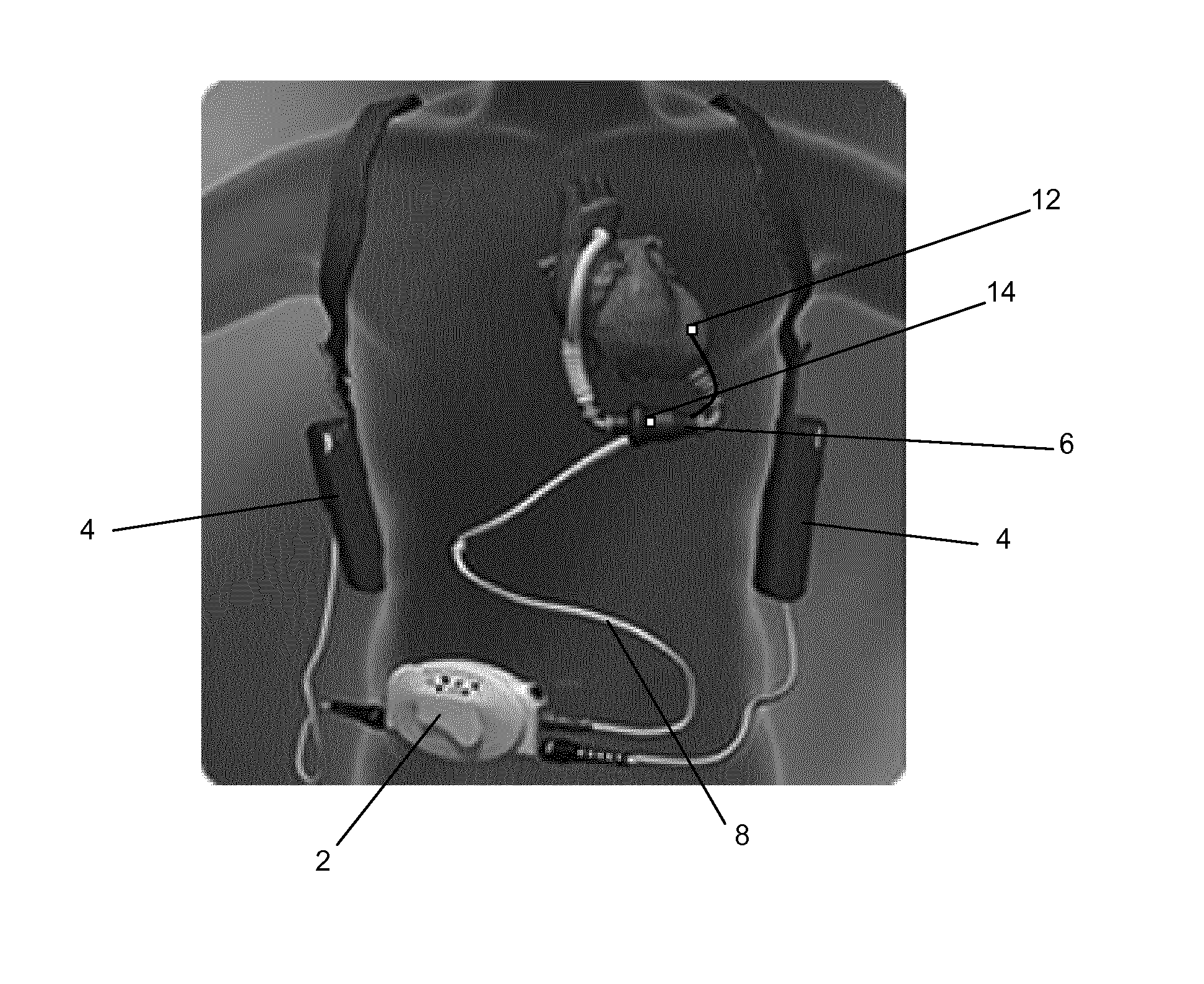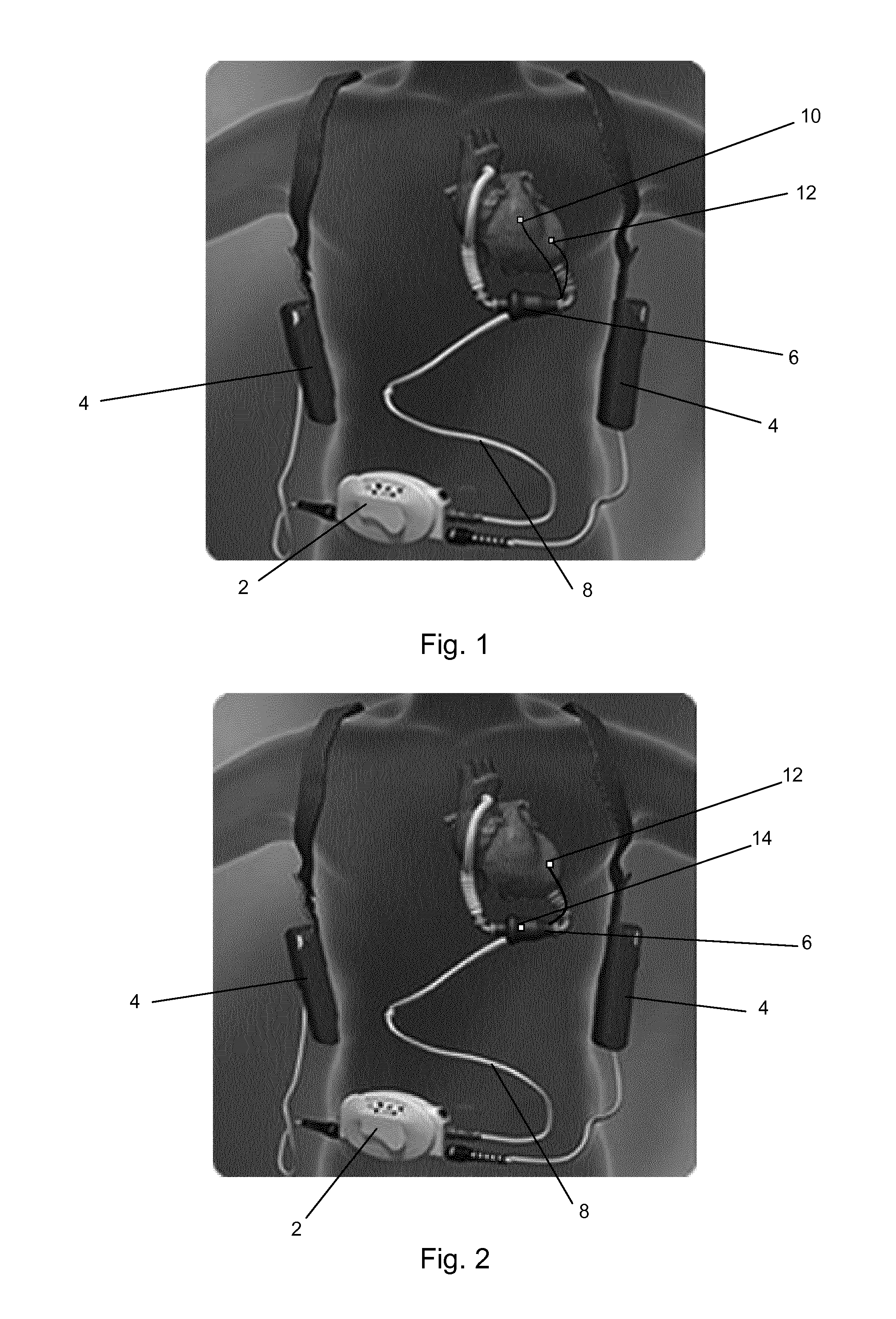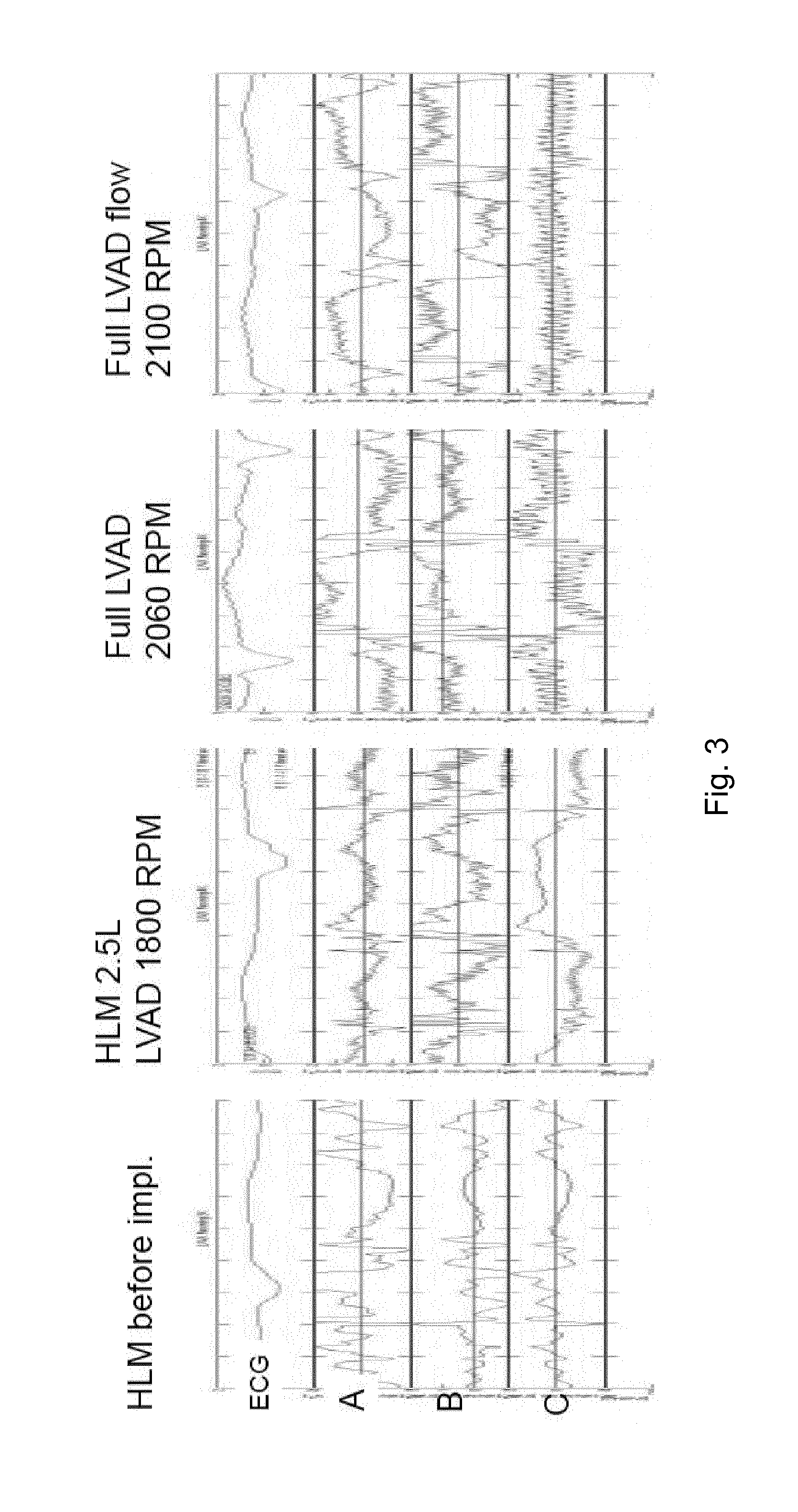Monitoring of a cardiac assist device
a technology of assist device and monitoring device, which is applied in the field of monitoring assist device, can solve the problems of not teaching the use of implantable sensors, sensors that are not capable of detecting pump movement, and affecting circulatory suppor
- Summary
- Abstract
- Description
- Claims
- Application Information
AI Technical Summary
Benefits of technology
Problems solved by technology
Method used
Image
Examples
Embodiment Construction
[0062]The LVAD device of FIGS. 1 and 2 is similar to conventional devices as regards its basic function in pumping blood to assist cardiac function. The LVAD comprises a controller 2, batteries 4 and a pump 6. The batteries 4 are held on the patient's body along with the controller by a harness. The controller 2 is linked to the batteries 4 by wires and control wires 8 link the controller 2 to the pump 6. The pump 6 is implanted inside the body and is connected between the left ventricle and aorta in order to provide ventricular assistance to the heart. The control wires 8 connect to the pump within the body and to the controller 2 outside of the body. They supply power and control signals from the controller 2 to the pump 6.
[0063]The example arrangement of the FIG. 1 embodiment further includes motion sensors 10, 12. A first motion sensor 10 is connected to the wall of the right ventricle, and a second motion sensor 12 is connected to the wall of the left ventricle. The control of ...
PUM
 Login to View More
Login to View More Abstract
Description
Claims
Application Information
 Login to View More
Login to View More - R&D
- Intellectual Property
- Life Sciences
- Materials
- Tech Scout
- Unparalleled Data Quality
- Higher Quality Content
- 60% Fewer Hallucinations
Browse by: Latest US Patents, China's latest patents, Technical Efficacy Thesaurus, Application Domain, Technology Topic, Popular Technical Reports.
© 2025 PatSnap. All rights reserved.Legal|Privacy policy|Modern Slavery Act Transparency Statement|Sitemap|About US| Contact US: help@patsnap.com



